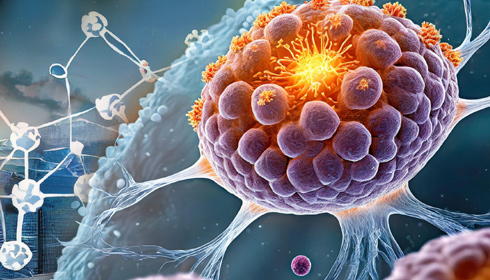
Japanese Scientists Announce Breakthrough Discovery: Next-Generation Treatments Enter Cancer Cells More Effectively
Researchers from Osaka University have made a groundbreaking discovery in the delivery of next-generation drugs, called antisense oligonucleotides (ASOs), into cancer cells. The potential of these ASOs to disrupt harmful messages from genes that fuel the growth and spread of tumours is immense. However, the challenge is to deliver these drugs into the cancer cells, which have natural gatekeeper molecules preventing unwanted substances from entering.
The study, published in the journal Nucleic Acids Research, outlines the development of a novel compound named L687, which acts as a key to unlocking specific calcium-permeable channels on the surface of cancer cells. Lead author Hiroto Kohashi explains that the compound effectively activates these channels, allowing calcium to flow into the cells. This influx of calcium signals the cells to open up and accept the ASOs.
During laboratory tests and experiments with mice, the combination treatment of L687 and ASOs demonstrated remarkable efficiency in delivering the drugs into cancer cells. This resulted in the suppression of target gene activity, enhancing the efficacy of the ASOs in combating cancer.
Previously, ASOs were primarily administered for incurable diseases and had to be targeted to specific areas like the liver or spinal fluid. However, the Osaka team's research indicates that L687 could serve as a versatile drug delivery system, potentially extending the benefits of ASO treatment to various parts of the body.
Pointing out the implications of their findings, Senior author Masahito Shimojo expresses optimism, highlighting that this breakthrough has the potential to significantly advance the development and delivery of ASOs and similar gene-targeting drugs for cancer treatment.
Additionally, the researchers are optimistic about the potential effectiveness of L687 in targeting lung or prostate cancers. They note that these types of cancer feature numerous calcium-permeable channels that L687 can target, thus paving the way for innovative next-generation therapies.
While this discovery presents promising prospects for the future of cancer treatment, it is important to acknowledge potential challenges and limitations. Further research and clinical trials will be necessary to fully understand the safety, efficacy, and potential side effects of this novel drug delivery system.
Nevertheless, this breakthrough marks a significant step forward in the ongoing battle against cancer, offering hope for improved treatment options and outcomes for patients in the near future.